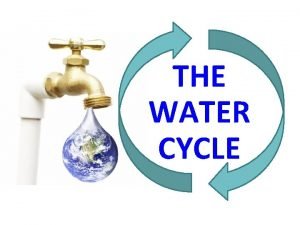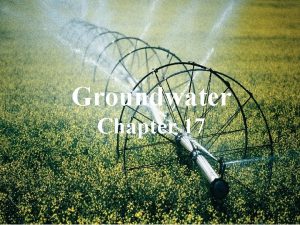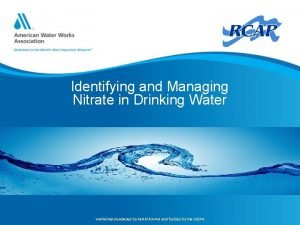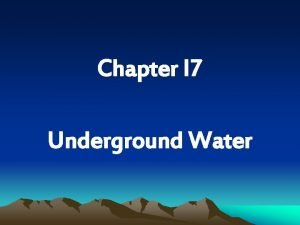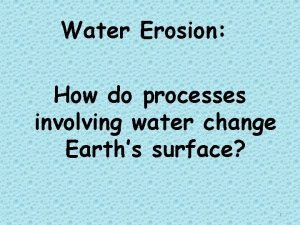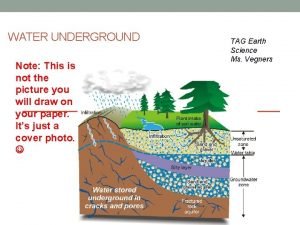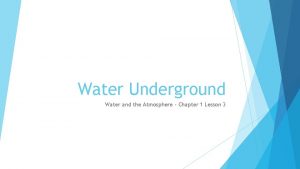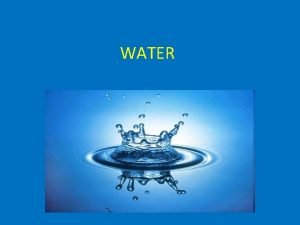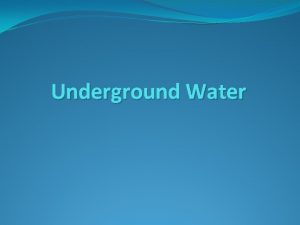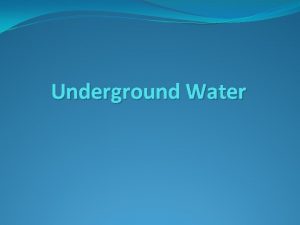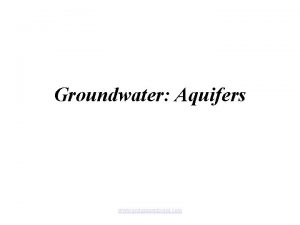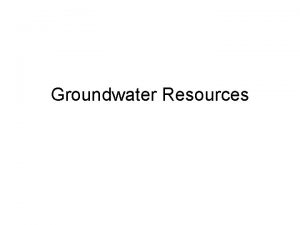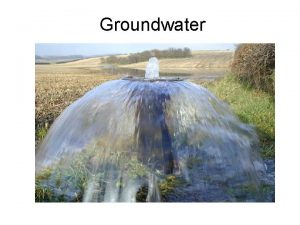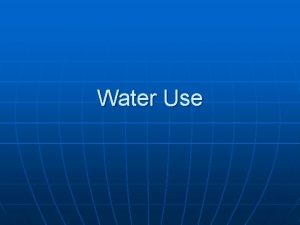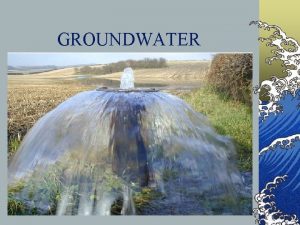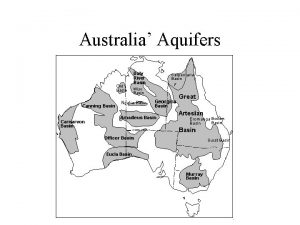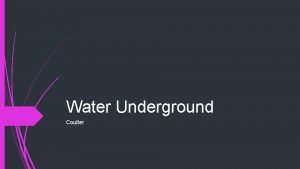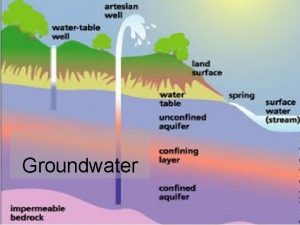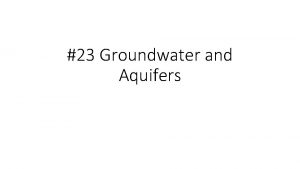Underground Water Groundwater Groundwater is contained in aquifers













- Slides: 13

Underground Water

Groundwater �Groundwater is contained in aquifers, porous spongelike layers of rock, sand, or gravel. �Aquifers- porous, saturated layers of sand, gravel, or bedrock through which groundwater flows �Water table = boundary between the upper zone of aeration and the lower zone of saturation, falls in dry weather, rises in wet weather

Aquifers �Confined or artesian aquifer = water under pressure, trapped within impermeable layers �Unconfined aquifer = water under less pressure; no overlying impermeable layer �Aquifer recharge zone = geographic area where water infiltrates soil and recharges aquifer

Groundwater and aquifers

Unconfined Aquifer Recharge Area Evaporation and transpiration Precipitation Confined Recharge Area Evaporation Runoff Flowing artesian well Infiltration Less permeable material such as clay Water table Recharge Stream Unconfined Aquifer. Well requiring a pump Infiltration Lake Unconfined aquifer Confining impermeable rock lay er Fig. 11 -2, p. 229

Ground water

Groundwater Pollution • Greater threat to humans than much of more visible surface water pollution • Much groundwater renewed slowly, such that pollution lingers for long time • Crude estimates indicate that up to 25% of usable groundwater in the U. S. contaminated • Extremely difficult to clean up contaminated groundwater; prevention more effective • Main approach: pump groundwater to surface, purifying water, and returning to aquifer; costs high © Brooks/Cole Publishing Company / ITP Water Resources and Water Pollution by Paul Rich

Polluted air Pesticides and fertilizers Coal strip mine runoff Deicing road salt Buried gasoline and solvent tanks Cesspool, Gasoline septic tank Pumping well station Water pumping well Waste lagoon Landfill Sewer Leakage from faulty casing Accidental spills te wa esh fr ned fi con n U Co Hazardous waste injection well f ned i f n re r ate w sh ifer u q ra aq er uif Discharge Confined aquifer Groundwater flow Fig. 11 -25, p. 249

Groundwater pollution sources

Prevention • Reduce sources that feed into the aquifer; • Monitor aquifers near landfills • Require leak detection systems and liability insurance for existing and new underground tanks that store hazardous liquids; • Ban or more strictly regulate disposal of hazardous wastes in landfills; • Store hazardous liquids aboveground with more safeguards. © Brooks/Cole Publishing Company / ITP Water Resources and Water Pollution by Paul Rich


Zamzam Well: �Zamzam well: is a well located 20 metres east of the Kaaba. �The Zamzam well is about 30 metres deep and 1. 08 to 2. 66 metres in diameter �The Saudi Geological Survey has a "Zamzam Studies and Research Centre" which analyses the technical properties of the well in detail

�The water level is 3. 23 metres (about 10. 59 ft) below the surface. A pumping test at 8000 litres/second for more than a 24 hour period showed a drop in water level from 3. 23 metres below surface to 12. 72 metres and then to 13. 39 metres, after which the water level stopped receding. When pumping stopped, the water level recovered to 3. 9 metres below surface only 11 minutes later. This data shows that the aquifer feeding the well seems to recharge from rock fractures in neighbouring mountains around Mecca
 Water and water and water water
Water and water and water water Water cycle diagram
Water cycle diagram What is importance of groundwater
What is importance of groundwater Aquifers and springs
Aquifers and springs Us aquifers
Us aquifers Underground water
Underground water The term geologists use for underground water is
The term geologists use for underground water is How to find water underground
How to find water underground Where does underground water come from
Where does underground water come from Zone of areation
Zone of areation Underground water table
Underground water table Hydrosphere facts
Hydrosphere facts A tiny groove in soil made by flowing water
A tiny groove in soil made by flowing water Running water and groundwater
Running water and groundwater

